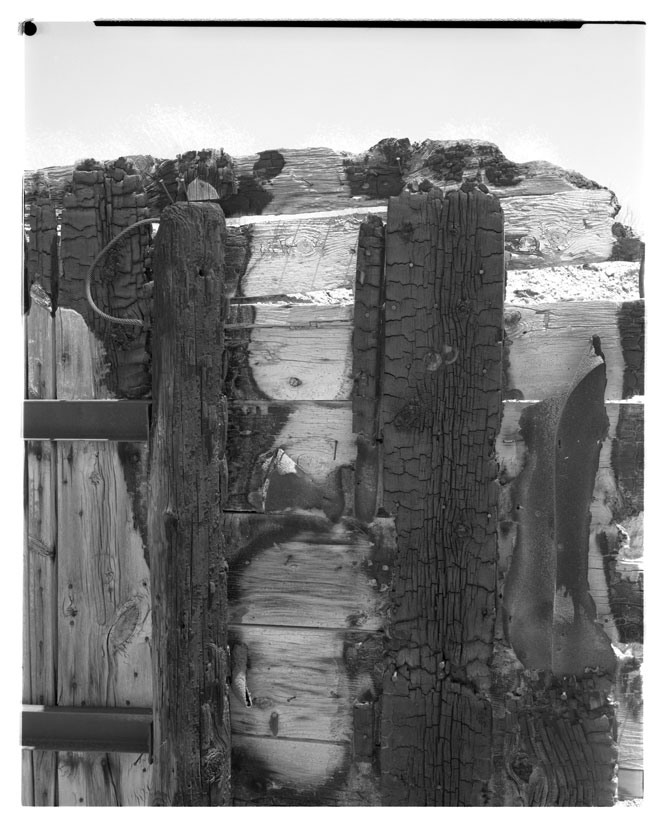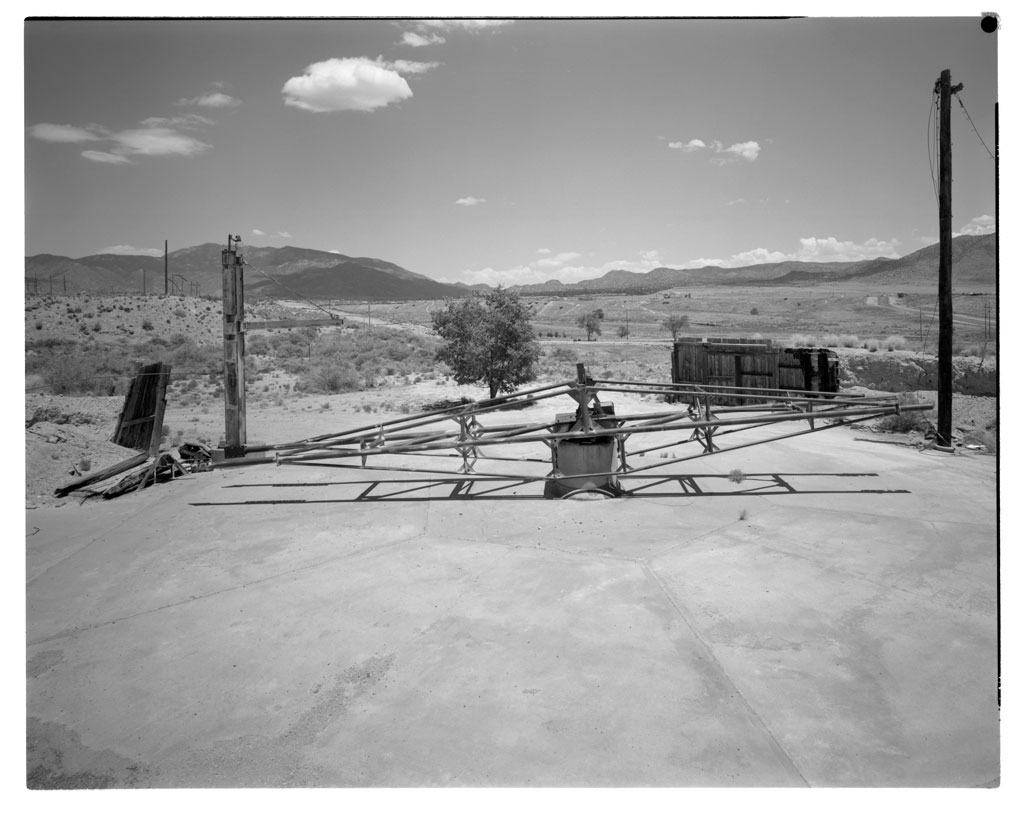
The first of Sandia’s large environmental test facilities, the Old Centrifuge was built in 1952 to test the Mk7 Honest John warhead. Environmental test facilities replicate the environments a component, device, or system is likely to encounter in its working life. The centrifuge simulated acceleration, as a missile carrying a warhead would accelerate to high gs on its way to a target. It was powered by a Thiokol T40 rocket and had no controls for stopping once the rocket fired. It was designed and built in-house in 120 days.
Composite film of the set-up and operation of Sandia’s rocket-powered centrifuge in 1952, with good views of its design and the materials used to construct it is shown below. A test device was mounted on one end of the 50′ arm and a Thiokol T40 rocket on the other end; the arm was counter-wound, and the rocket was fired.
Rocket-Powered Centrifuge in Action

Designed by Sandia engineers and built in-house by Plant Engineering (now the Labs’ Facilities organization), the centrifuge was built on a circular space created by grading an area of sloped land near Tijeras Arroyo. A dirt berm was formed to curve around the south, west, and north sides of a round concrete pad.

The earth berm was held back by a wood exterior wall that extended ¾ of the way around the poured concrete floor of the centrifuge arena. The arena was open to the east.

The walls were burned in places, damage from the rocket firing.

The centrifuge pedestal was poured concrete and rose from the center of the pad. It held a 50′ diameter steel arm to hold a test unit on one end and a rocket on the other.

Wood poles to hold cable and power lines stood up near the end-points of the wall at the north and south sides of the centrifuge. An additional steel pole held cable on an arm extending toward the centrifuge. The metal-frame structure that formed the centrifuge arm rested on and turned around the concrete pedestal in the middle of the arena.

A control shelter structure was built down the slope from the centrifuge and tucked into the hillside. Made of wood, it offered protection for launching and running a test on the centrifuge above.
The Historic Designation

The DOE/NNSA/Sandia Field Office determined the centrifuge was historic in consultation with the New Mexico State Historic Preservation Officer. In November 2011, SFO and SHPO signed a Memorandum of Agreement requiring Sandia to document the centrifuge before it was removed.
The centrifuge was determined to be historic based on its association with Sandia’s established Cold War theme of environmental testing. While it was not used extensively for testing of other weapons that entered the U.S. stockpile, its testing of the Mk7 does represent Sandia’s earliest foray into large-scale environmental testing at the SNL/NM site.
It was also determined to be historic due to its design. Although not the work of a master or possessing high artistic values, its in-house design represents the understanding of engineering features required for testing warhead designs to high gs in the early 1950s.
End of Life

The centrifuge was only used to test the Honest John warhead (the Mk7 or W7) in the 1952-1953 period. Its capability was replaced in 1954 by the construction of the large outdoor hydraulic centrifuge to the south in Tech Area III. It sat unused until 2010, when its mass was found to be contributing to erosion in the arroyo. After completing National Environmental Policy Act and National Historic Preservation Act requirements and photographing it, the centrifuge was removed.